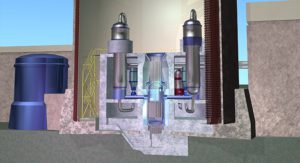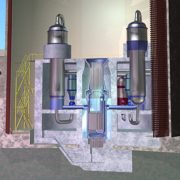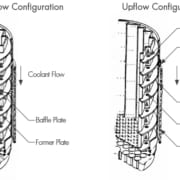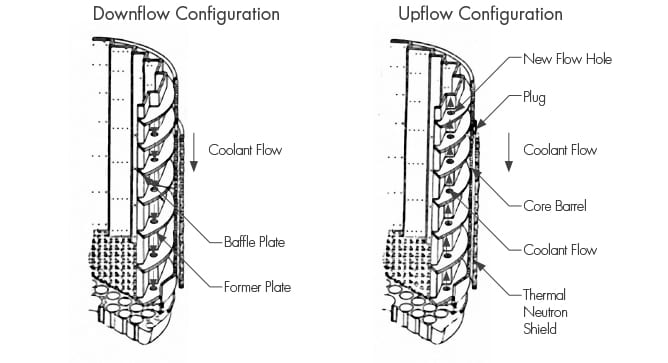News & Views, Volume 50 | Reactor Vessel Integrity
FRACTURE TOUGHNESS CRITERIA
By: Tim Griesbach and Dan Denis
 The integrity of the nuclear reactor pressure vessel is critical to plant safety. A failure of the vessel is beyond the design basis. Therefore, the design requirements for vessels have significant margins to prevent brittle or ductile failure under all anticipated operating conditions. The early vessels in the U.S. were designed to meet Section VIII of the ASME Boiler and Pressure Vessel Code and later Section III. ASME Section III included requirements for more detailed design stress analyses also included a fracture mechanics approach to establish operating pressure-temperature heatup and cooldown curves and to assure adequate margins of safety against brittle or ductile failure incorporating the nil-ductility reference temperature index, RTNDT. This index is correlated to the material reference fracture toughness, KIC or KIa.
The integrity of the nuclear reactor pressure vessel is critical to plant safety. A failure of the vessel is beyond the design basis. Therefore, the design requirements for vessels have significant margins to prevent brittle or ductile failure under all anticipated operating conditions. The early vessels in the U.S. were designed to meet Section VIII of the ASME Boiler and Pressure Vessel Code and later Section III. ASME Section III included requirements for more detailed design stress analyses also included a fracture mechanics approach to establish operating pressure-temperature heatup and cooldown curves and to assure adequate margins of safety against brittle or ductile failure incorporating the nil-ductility reference temperature index, RTNDT. This index is correlated to the material reference fracture toughness, KIC or KIa.
Radiation embrittlement is a known degradation mechanism in ferritic steels, and the beltline region of reactor pressure vessels is particularly susceptible to irradiation damage. To predict the level of embrittlement in a reactor pressure vessel, trend curve prediction methods are used for projecting the shift in RTNDT as a function of material chemistry and fluence at the vessel wall. Revision 2 of this Regulatory Guide is being used by all plants for predicting RTNDT shift in determining heatup and cooldown limits and hydrostatic test limits.




